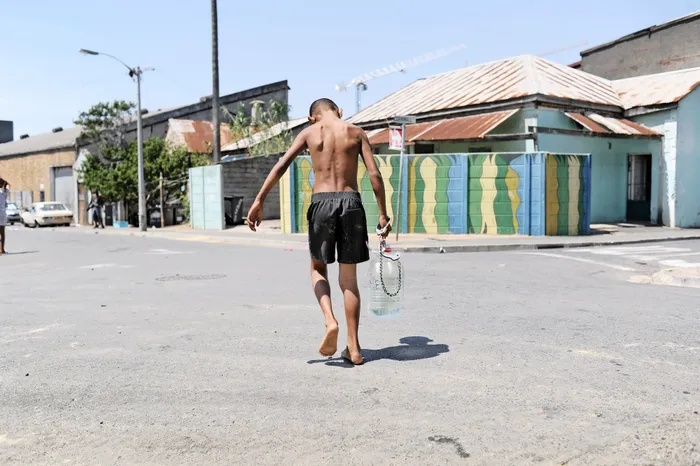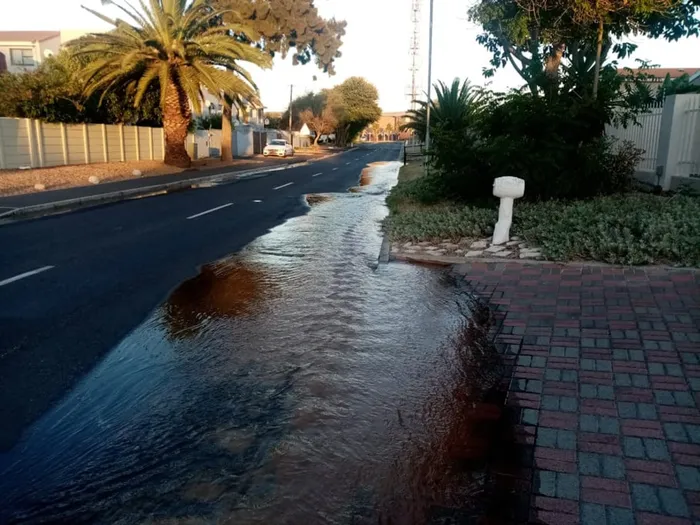SA Water Crisis | Is this the new load shedding? Experts warn of long-term scarcity

South Africa could experience a water deficit of 17% by 2030, the WWF warns.
Image: Alan Kearney / Connect Images via AFP
Water is life. From essential sustenance to hygiene, and the all-important irrigation for the food we eat, its importance cannot be understated.
South Africa has always been a water-scarce country, but the effects of climate change add a new dimension of insecurity to our future, and that's sadly not the only existential water threat that the country is facing.
Crumbling infrastructure in many of South Africa’s major cities means that even when the dams are full, thousands are still left without access to water, and it’s a situation that only looks set to worsen.
But will a major city or region ever run out of water completely?
South Africa has experienced several severe drought and flood events in the past 10 years. According to the Academy of Science South Africa (ASSAf), the country is already water insecure, even before the impact of long-term climate change is factored in.
Consider that South Africa’s current annual rainfall average of 450mm is almost half the world's average of 860mm per annum. The country clearly cannot afford for rainfall levels to drop further, but worryingly, the odds are stacked in favour of further declines.

Droughts are poised to become more frequent, experts warn.
Image: AFP
The Worldwide Fund for Nature (WWF) predicts that South Africa could experience a water deficit of 17% by 2030.
Cape Town came dangerously close to “Day Zero” in 2018, with dam levels having dipped to 13.5% when the first rains of the season broke the prolonged drought.
The city’s current dam levels, at just below 60%, are at their lowest levels in eight years, and with the South African Weather Service predicting a drier-than-usual winter rainfall period for the south western regions, authorities are once again speaking of possible water restrictions for the coming summer.
Although Cape Town isn’t facing an immediate ‘Day Zero’ threat, many feel that the 2018 scenario will eventually be repeated.
A report compiled by Stanford University and the National Oceanic and Atmospheric Administration (NOAA) predicts that Cape Town faces an 80% higher chance of another “Day Zero” drought before the end of this century, if greenhouse gas emissions continue to rise at current rates.
Admittedly, the Mother City could be in a better position to avert disaster. This is thanks to numerous measures that aim to increase the supply by 300 million litres per day, including water reuse, groundwater abstraction, and clearing of invasive plant species.
Get your news on the go, click here to join the IOL News WhatsApp channel.

Cape Town came dangerously close to Day Zero in 2018.
Image: Henk Kruger / Independent Media
But it’s not only the Western Cape that faces the prospect of severe droughts in the future.
The International Panel on Climate Change (IPCC) expects droughts to become more frequent in South Africa in the coming decade. The organisation also says the risk of lower rainfall levels in the country is about four times higher than the prospect of increased precipitation, although the east coast could see an increase in flooding. The latter is another risk to our water supply.
“Climate change can have deleterious effects on water quantity and quality,” said Leleti Maluleke of Good Governance Africa.
“The effects of extreme weather events on water availability, predictability and pollution are increasing, threatening sustainable development, biodiversity and access to water and sanitation.
“In addition to contaminating land and water resources, flooding and rising sea levels can cause damage to water and sanitation infrastructure,” Maluleke added.
South Africa is heavily reliant on rainwater, and currently, more than 60% of its dams are overexploited, and only a third of rivers are considered to be in good condition.
Poor governance of the country’s water systems is compounding the effects of climate change, Maluleke added. Limited maintenance of ageing infrastructure is resulting in significant water losses.
A report by Earth.Org states that around 70 million litres of clean and drinkable water are lost each day through leaking pipes.
Regions such as Gauteng are currently in a good position to attain a high level of water security, with the long-delayed second phase of the Lesotho Highland Water Project (LHWP) expected to deliver an additional 490 million cubic metres of water to the region. This second phase is expected to come on stream between 2028 and 2030.
Yet, regardless of how much water is flowing into the region’s water system, failing infrastructure caused by inadequate maintenance has led to frequent and prolonged water outages across the city. Many of the city’s water pipes and reservoirs are old and in need of replacement, and a large portion of the water supply is lost due to leaks and other infrastructural failures.

Water streams down a suburban road after a pipe burst.
Image: Supplied
IOL spoke to numerous ward councillors across the city, all of whom spoke of water problems caused by a lack of maintenance.
“In my ward, the infrastructure is failing and Joburg Water just keeps patching the bursts and leaks, where proper infrastructure upgrades would work better,” said Zander Shawe of Ward 89 in the Fairlands area.
He said proactive and preventative measures are lacking, while the most recent financial year saw the city lose 38% of its water to leaks and illegal connections. This equates to wasteful expenditure of around R2.9 billion.
Lynda Shackleford of Ward 103 (Sandton) also spoke of old infrastructure and ongoing issues.
“Some areas are without water monthly due to ongoing bursts. These areas have been on the councillors’ IDP (to-do list) since 2016.”
Such problems also plague KwaZulu-Natal, particularly in the rural areas, which frequently face widespread water shortages.
In Durban, residents are also being brought to their knees by the so-called “water mafia”. These criminals are allegedly damaging water infrastructure deliberately to win contracts for their emergency water tanker services.
Alarmingly, a 2023 report by the Department of Water and Sanitation found that numerous water supply systems were operating close to, or beyond, their design capacity.
It’s no surprise that in March this year, President Cyril Ramaphosa declared a national water emergency, and called for an urgent “national water plan” to fix infrastructure and deal with other problems such as vandalism.
Will ‘water-shedding’ become the norm in South Africa?
Where is this all leading?
Since 2008, South Africans have been forced to deal with intermittent power cuts in the form of load-shedding, which reached particularly catastrophic levels in 2023, before various measures mitigated the problem in 2024.
As with load shedding, water shedding involves planned water supply interruptions by municipalities in order to manage water scarcity or infrastructure failures.
For instance, many Johannesburg communities experienced empty taps for weeks in October 2022 after demand for water exceeded supply to municipal reservoirs. Just before the elections in May 2024, numerous areas, including Melville, Cyrildene, and parts of Soweto, were hit with prolonged outages caused by a combination of infrastructural issues and even power outages. And the list goes on.
This ‘water shedding’ phenomenon does not enter the national discourse with the same intensity as load shedding does, as it is a far more localised phenomenon, as opposed to a national strategy that affects everybody at the same time. But its effects hit just as hard.
"Gauteng’s municipalities are grappling with varying degrees of service delivery crisis, particularly in water management. The province is now facing acute water shortages due to years of infrastructure neglect and rampant illegal connections," said Aubrey Mc Elnea, CEO of Tsebo Facilities Solutions.
He said migration into the urban areas was adding a further burden to an already ineffective water infrastructure, which has led to municipalities initiating draconian water restrictions on users.
"This dire situation underscores the urgent need for both provincial and national intervention to rectify these systemic failures and ensure sustainable service delivery," Mc Elnea added.
"There are a number of commercial models available to the public and private sectors, which would facilitate effective collaboration to the benefit of the residents of Gauteng. These could include Public-Private Partnerships that harness private sector capital and expertise over a given period, transforming the infrastructure environment of a municipality. It does require political will and the willingness of all parties to work together for the benefit of its citizens."
Unless urgent action is taken with haste, it is highly plausible that water shortages could increase in frequency to the point where they disrupt the lives of most South Africans on a regular basis.
IOL
Related Topics: